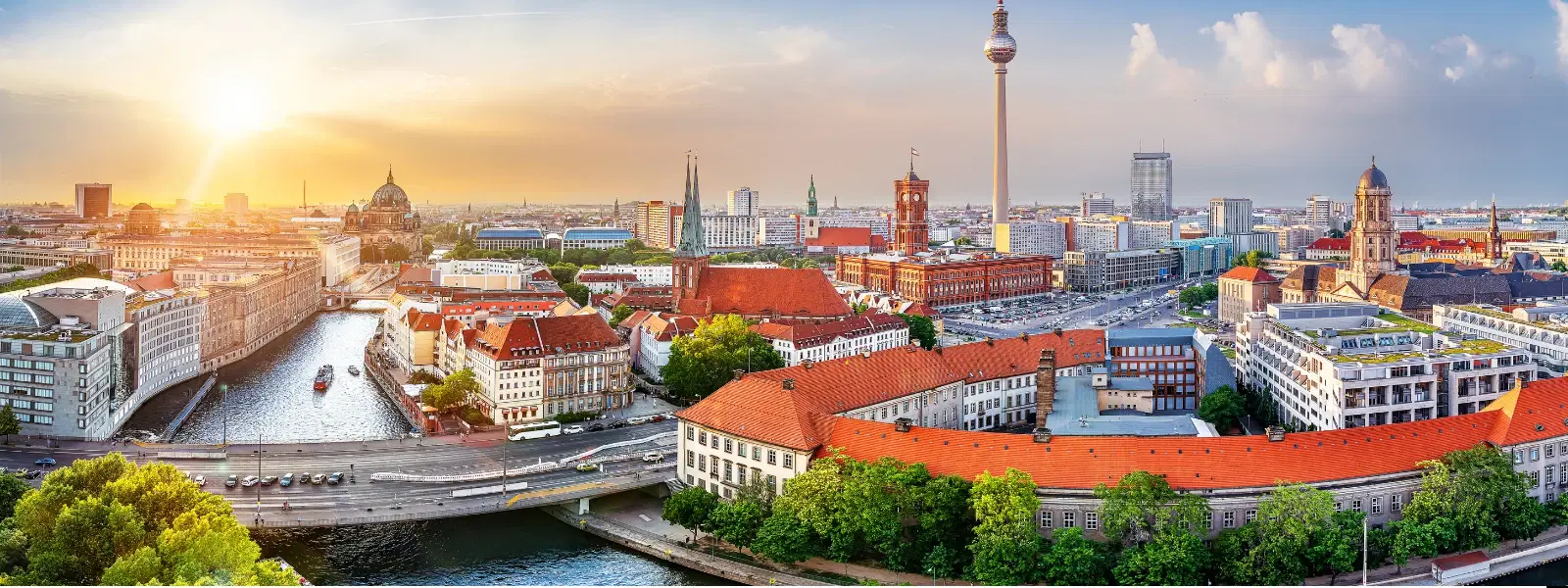
Hotels
•05 min read

Berlin is a city of contrasts where every season unveils a new facet of its unique charm. From the lively energy of summer festivals to the enchanting stillness of winter, Berlin welcomes visitors with diverse experiences tailored to every interest. This blog post will guide you through the seven best times to visit Berlin, exploring its travel seasons, weather, and travel tips that will help you plan the perfect trip. Discover when to visit Berlin for its vibrant street life, cultural events, or budget-friendly travel, and learn how to maximize your stay in Germany's bustling capital.
Berlin experiences a full range of seasons each with its own distinct personality. In spring, the city comes alive with the scent of blooming flowers and gentle weather that invites leisurely walks through its expansive parks. Summer brings warm temperatures, extended daylight hours, and countless outdoor events. Fall paints the city in vibrant hues of red and gold, making it ideal for cultural excursions and scenic photography. Meanwhile, winter drapes Berlin in a quiet, reflective ambiance, highlighted by festive markets and cozy indoor retreats.
When planning your Berlin getaway, it's important to weigh the differences between traveling during the peak and off-season. The summer months, especially June through August, mark the prime time for tourism in Berlin. Expect crowded attractions, higher hotel rates, and bustling streets, but also a lively celebration of outdoor festivals and nightlife. In contrast, the off-season—typically from November to February—offers a more relaxed pace with fewer visitors, lowered accommodation prices, and ample opportunities to enjoy indoor attractions, from museums to concerts.
Pro Tip for Berlin Vacation Planning
If you’re looking to save on accommodation and enjoy a quieter Berlin, consider visiting during the off-season. Winter months offer lower hotel rates and shorter queues at major attractions.
Spring in Berlin is a period of renewal and gentle excitement. The weather is moderate, offering comfortable temperatures perfect for exploring the city on foot. With parks and gardens in full bloom, establishing a serene backdrop, the city's outdoor spaces such as the Tiergarten provide a refreshing escape from urban life. Furthermore, Berlin hosts events like the Berlin Spring Festival and vibrant Easter celebrations, which add to the charm of the season with local traditions and cultural displays.
The unpredictable spring weather calls for versatile packing. Layered clothing is ideal as temperatures can vary throughout the day. Don't forget to pack a light raincoat or umbrella, as occasional showers are common. Enjoy outdoor activities by planning a picnic in one of Berlin's sprawling parks or taking a reflective stroll along the Berlin Wall Memorial. This season is also prime for cultural explorations, as fewer crowds mean a more personal experience at museums and galleries.
Summer in Berlin offers an unmatched vibrancy. With warm weather, audiences enjoy nearly endless daylight, which is perfect for exploring the city's outdoor attractions and cultural landmarks. Summer is particularly renowned for its festival spirit: lively events like the Berlin Pride Parade, musical festivals, and spontaneous outdoor raves keep the city's nightlife buzzing well into the night. Beer gardens open their doors to locals and tourists alike, offering a taste of authentic Berlin social life.

Traveling during Berlin's peak season requires a bit of planning. Booking hotels well in advance is key to securing the best rates and locations. Early morning visits to popular attractions can help you beat the crowds and make the most of your sightseeing time. Alternatively, exploring the city late in the evening can offer a quieter, more intimate glimpse into Berlin’s cultural scene. Public transportation in summer is efficient, so use the well-connected network to navigate between outdoor festivals, art installations, and historical landmarks.
As the city transitions from the hustle and bustle of summer, fall in Berlin brings a refreshing change. Cooler, crisp air and the soft glow of autumn light create picturesque scenes throughout the city. Cultural activities are abundant, with events such as Berlin Art Week and Oktoberfest celebrations reflecting the city's deep artistic and culinary traditions. Beauty meets history in autumn, where the blend of scenic fall foliage and historic architecture offers a perfect backdrop for both serious photography and leisurely wandering.
When visiting Berlin in the fall, be prepared for cooler evenings by packing a warm jacket and a few sweater options. Ideal spots for capturing the season's vibrant charm include the Tiergarten and gardens around Charlottenburg Palace, where colorful leaves enhance every snapshot. Take advantage of lower tourist volumes this time of year to explore cultural sites at a more relaxed pace and enjoy leisurely meals in Berlin’s many cozy cafes.
Winter in Berlin casts a spell of quiet magic that is both enticing and unique. The festive season is highlighted by numerous Christmas markets, where the air is filled with the scent of mulled wine and gingerbread. Ice-skating rinks and warmly lit streets offer a picture-perfect setting reminiscent of a fairy tale. The low tourist influx during these months often results in lower hotel prices, making winter a particularly attractive option for travelers seeking a budget-friendly experience.
While winter offers many charms, visitors should plan carefully for shorter daylight hours and colder temperatures. Ensure that your wardrobe includes thermal wear and a good coat. Explore indoor activities such as museum tours or attend a live concert in one of Berlin’s renowned theaters. Even in the cold, the city’s heritage and culture shine through, making winter an excellent time for serious travelers and history enthusiasts alike.
For those drawn to Berlin's legendary nightlife, summer is the season when open-air parties and music festivals create an electrifying atmosphere. However, during winter, the underground club scene takes center stage, offering intimate and edgy experiences away from the mainstream.

Travelers on a budget will find that winter, especially January and February, is the ideal time to visit Berlin. The off-peak season provides an array of travel discounts, reduced hotel rates, and shorter queues at popular attractions, ensuring a cost-effective yet enriching experience.
Families looking for a relaxed sightseeing experience should consider traveling during the spring or fall. These seasons offer mild weather, lush outdoor settings, and fewer crowds, making it easier to explore the city's parks, museums, and historical sites without overwhelming hustle and bustle.
The best month depends on your preferences. For warm weather and vibrant events, July is excellent, while September offers pleasant temperatures with fewer crowds.
Three to five days is typically sufficient to explore Berlin's essential attractions, charming neighborhoods, and rich cultural experiences.
The winter months, particularly January and February, are the most budget-friendly periods due to lower hotel rates and minimal crowds.
May and September are ideal for visiting Germany, providing a balanced climate and fewer tourist crowds.
Berlin is a city that offers something special in every season, from the energetic buzz of summer festivals to the cozy embrace of winter markets. Whether you are drawn by the lure of cultural events, a lively nightlife, or a more relaxed, budget-conscious journey, Berlin's dynamic travel seasons ensure that there is an ideal time for every traveler. Embrace the local traditions and seasonal highlights, and let Berlin transform your travel experience with its blend of history, art, and modern vibrancy.